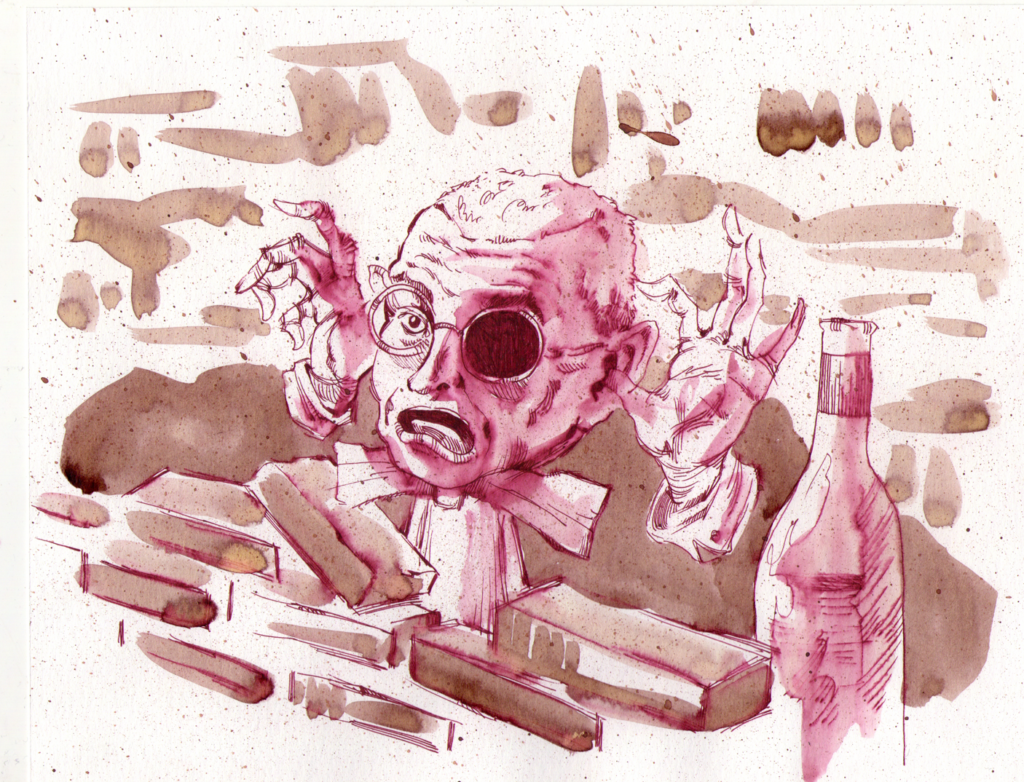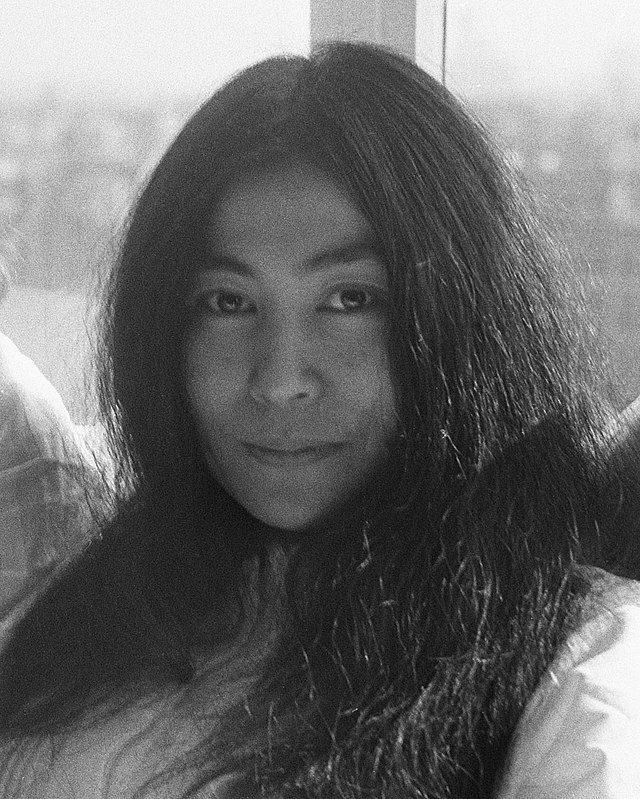Throughout history, there have been many art movements that sought to challenge the status quo and defy the traditional conventions of art. Fluxus was one such movement that emerged in the 1960s.
Rooted in the Latin word “flux,” meaning flow or change, Fluxus sought to redefine the very essence of what art was. It dismantled traditional conventions and fostering an interplay between various creative disciplines.
This article delves into the characteristics of Fluxus, exploring key figures, distinctive artworks, the movement’s enduring influence on contemporary artistic practices, and the ultimate decline of Fluxus.

Characteristics of Fluxus
At its core, Fluxus was not just an art movement. It was more of a philosophy that challenged the status quo. It encouraged a playful and experimental approach to artistic expression.
Fluxus is characterized by erasing the rigid boundaries that traditionally separated various art forms. It was founded by the visionary George Maciunas.
Fluxus embraced art from all different mediums. It set no rules for its artists to be constrained by. This led to more freedom of artistic expression where young artists could experiment without feeling judged or ridiculed.
Maciunas sought to create a seamless integration of visual art, music, performance, literature, and happenings where audiences could watch and participate in the art. This interdisciplinary approach redefined the nature of artistic expression.
It also encouraged a collaborative spirit among artists from diverse backgrounds. The fluidity between different mediums became a hallmark of Fluxus.
Challenging the Status Quo
Central to Fluxus is an ethos of playfulness and experimentation. It challenged established artistic conventions with a mischievous and innovative spirit.
Fluxus artists would embrace unconventional materials and methods. It pushed the boundaries of what could be considered art.
It encouraged a sense of freedom and spontaneity in artistic creation. It fostered an environment where experimentation was not only welcomed but celebrated.
Audience Participation
Audience participation played a crucial role. Fluxus performances often involved playful interactions. It invited spectators to become active participants in the experience.
Unlike traditional art forms that often maintain a clear distinction between creator and observer, Fluxus sought to break down this barrier by encouraging active engagement from the audience.
Attendees were not just spectators. Instead, they became involved in the unfolding creative process.
George Maciunas
One of the key figures and founders of Fluxus was George Maciunas. Maciunas played a pivotal role in the establishment of Fluxus.
In the early 1960s, he brought together a diverse group of artists. Their goal was to create an international network of artists who collaborated on interdisciplinary and experimental projects.
He was the driving force behind the concept and organization. He outlined the movement’s anti-commercial stance, emphasis on collective creativity, and rejection of elitism in art.

Maciunas believed in breaking down the barriers between visual art, music, literature, and performance. This fostered a holistic and inclusive approach.
Serving as the organizational backbone of Fluxus, Maciunas arranged festivals, exhibitions, and events showcasing the movement’s diverse talents. He established Fluxus Editions, a publishing house producing limited-edition Fluxus multiples and publications.
Yoko Ono
Another important figure in the Fluxus movement was Yoko Ono of The Beatles fame.
In the early 1960s, Ono became deeply involved with Fluxus. She collaborated with other artists and participated in Fluxus events and festivals.
Her performances, often characterized by a blend of visual and conceptual elements, aligned seamlessly with the movement’s emphasis on breaking down traditional artistic boundaries.

Yoko Ono’s impact on Fluxus was profound. She contributed to the movement’s visibility and shaped its artistic direction.
Her works, such as the “Cut Piece” performance, where audience members were invited to cut pieces of her clothing, reflected Fluxus’s commitment to audience participation and challenged conventional notions of ownership in art.
Ono’s innovative and boundary-pushing art inspired other Fluxus artists. She added a unique dimension to the movement’s collective identity.
Fluxus Artworks and Practices
The Fluxus movement was manifested through a diverse array of artworks and practices. Rooted in the idea that art should be an active, participatory experience, Fluxus artworks were often put on display at special events.
Happenings
Happenings were spontaneous, unpredictable, and interactive events that blurred the lines between art and life. Participants and audience members were actively involved in happenings.
This participation could range from simple actions to more complex interactions. Happenings could also incorporate various media, including visual arts, music, poetry, and theater.
Notable examples include Allan Kaprow’s “18 Happenings in 6 Parts” and George Brecht’s “Water Yam.”
Fluxus Scores
Fluxus Scores were instructional pieces, akin to musical scores. They provided a set of guidelines or directives for a performance or artistic action.
These scores often incorporated everyday objects and encouraged participants to engage in specific activities or interactions. The emphasis was on the process rather than the finished product.
This highlighted Fluxus’s commitment to democratizing art and making it accessible to everyone. Examples of Fluxus Scores include Yoko Ono’s “Cut Piece” and George Maciunas’s “Solo for Violin.”
What Happened To Fluxus?
Fluxus was deliberately designed to be an incubator for creativity rather than a set of restrictive boundaries. The movement’s ethos was rooted in breaking down the barriers between art and life.
It encouraged spontaneous expression. It fostered an environment where artists could explore without limitations.
As a result of this intentional openness, Fluxus naturally evolved and dissolved into other artistic endeavors. The movement’s emphasis on experimentation, collaboration, and a rejection of hierarchical structures allowed artists to explore diverse paths.
Rather than confining creators within a rigid framework, Fluxus acted as a springboard. It propelled artists into new realms of artistic exploration.
Concurrently, the movement itself evolved. It influenced subsequent artistic movements and contributed to the broader landscape of contemporary art.
While some artists maintained their connections to Fluxus, the movement’s influence extended beyond its original form.
Fluxus Is Still Around Us
The decline of Fluxus as an art movement is more of a gradual evolution and dispersion of its key members rather than a specific event.
Fluxus, from its inception, was a diverse and loosely organized collective of artists. They each had their own interpretations of its principles.
The freedom fostered by Fluxus gave artists the confidence to explore their own artistic tastes and acted as a springboard. It propelled them into new realms of artistic exploration.
References
What Is Fluxus?
https://www.artsy.net/article/artsy-editorial-fluxus-movement-art-museums-galleries
What was Fluxus? https://www.pbs.org/wnet/americanmasters/what-was-fluxus/27616/
Fluxus